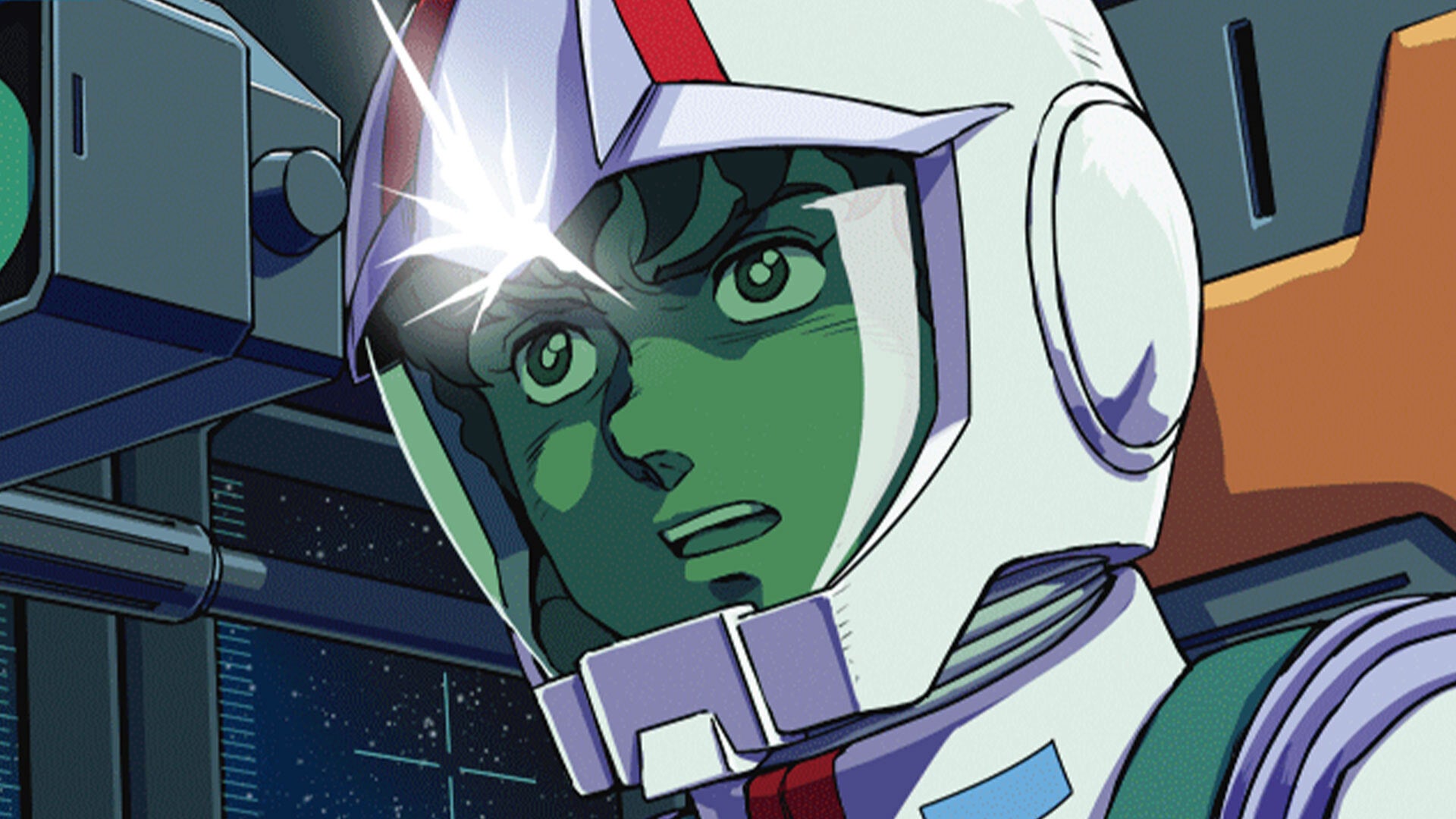With the surge of popularity among anime card games like One Piece and Digimon, it was only a matter of time until we saw another one get introduced into the TCG landscape. Enter the Gundam Card Game, which is yet another well-known anime franchise that joins the ranks of Dragon Ball and Bleach under the Bandai Card Games umbrella. This is not the first time Gundam had a card game, though. In 1999, Gundam War was released in Japan. Now, 25 years later, interest seems to be rising again. From what I’ve seen so far, the Gundam Card Game has very similar mechanics to other Bandai Card Games, but the couple of twists alongside a global release plan make this upcoming release a bit more exciting for both fans and competitive players.
The preview event took place at the NASA Space Center in Houston which was fitting for the space setting that Mobile Suit Gundam is known for. After a brief presentation of the card game and some words from the special guest astronaut Anthony Antonelli, it was time to check out the game. It’s here that we got access to the cards with the opportunity to build our own decks using a mix of provided cards and packs from the Beta Edition. Being familiar with Bandai’s One Piece Card Game among many other TCGs, it was pretty easy to pick up Gundam from the get-go. If the unfamiliar keywords are a little intimidating, the cards usually describe what the mechanics do. With that said, it’s just the beginning of the Gundam Card Game, so mechanics aren’t too complicated at this point if you have any TCG experience.
As far as TCGs go, the Gundam Card Game is pretty standard in regards to the types of cards and abilities you can play. There are four types of cards at the moment including Units, Pilots, Commands, and Bases. Units are of course the mech suits that fans all know and love. The Pilots are for the most part upgrades that you can attach to said Units to buff and occasionally add abilities. Commands are one-time use cards like spells in other games, with effects like drawing cards or removing units from the field. Finally, Bases are used as an extra defensive layer to protect the player’s life count. The goal of the game is to whittle down your opponent's shields down to zero before dealing the winning blow. So much of the gameplay is balancing between attacking your opponent’s units and shields and defending yourself with bases or units that can block with the help of command cards on both fronts.
The resource system is very interesting in this game, because not only does it help the players pay for things, but it also determines whether they can play strong or weak cards. Similar to One Piece and even Hearthstone if you’re not familiar with Bandai Card Games, the player gains resources or mana every turn up until the max of ten on the field. It is possible to get more resources with the help of EX resource cards, which are one-time use versions. Here’s the kicker: cards have both a cost and a level printed on the card. A player’s level is determined by how many resource cards they have in play. So if a player has five resource cards and one EX resource card, they can play a level 6 card – like the rare Wing Gundam unit – as long as they have the available active resources to do so. Even though Wing Gundam costs four resources to play, the player is not allowed to play it until they reach six resources. It sounds daunting to think about in regards to creating and balancing cards on the developer side, but it’s a nice way to progress the gameplay without dealing with super strong cards very early. At least that’s what it appears to do from my perspective.

Another cool mechanic of the game revolves around the Pilots. Of course with Gundam comes the various pilots from the many series, from the OG man himself Amuro Ray to the brooding Heero Yuy. In addition to improving the capabilities of any given Unit, some Pilots have their primary mech suits, which allow for a special status called Link Unit. When Amuro Ray is attached to an RX-78-2 Gundam, for instance, they gain the Link Unit status allowing the Gundam to attack immediately on the turn it was played. That’s the biggest plus when creating a Link Unit. Otherwise, some cards get added effects as well, like the Pilot Banagher Links, who draws one card when he and Unicorn Gundam gain Link Unit status when pairing. So when it comes to building a solid deck, these synergies seem to play a big part in getting the most value from the cards you are able to play.
With the cards I had, I was able to create three mono-color decks in green, blue, and white. Green seems to be the more aggressive of the trio, with mechanics like Breach that do additional damage to the opponent’s shield when destroying units. Blue seems more like control, which the color is notoriously known for in card games. This includes pinging units for damage, healing, and even resting or dulling enemy units which allows for attacks on them. And white was full of units that can block, so it’s a very defensive play style. Players can build decks with a max of two colors, which was recommended per the inserts in the kit, but making your own decks is more fun! Not to mention the beautiful art on some of these cards in this game. Like other Bandai Card Games, we can expect totally new alternate art on many of these cards and that’s enough to get any Gundam fan interested in this.

Another interesting announcement for this game was the global release schedule. Having played the One Piece Card Game competitively for some time, there was a lot of discussion about the Japan meta, because the cards were released there first versus other territories. For instance, a card will be really strong in Japan’s competitive scene, so they nerf or ban it by the time it gets to other territories like the States. This didn’t make folks happy and otherwise made a strong and rare card useless. With the global release, this should alleviate all of those concerns and give everyone the same time with new cards before any kind of restriction is warranted.
When the Gundam Card Game was first revealed, I was excited to see anything Gundam, but to also crossover with a gaming medium that I love was the cherry on top. Having played with other TCGs and experiencing their communities, I can see something similar happening where fans of the series who don’t necessarily play card games want to jump into this game to check it out, which is always great to see. In the end, these kinds of games benefit from the existing fandom and the gameplay is interesting enough to make for some cool deck-building and matches. It’s just getting started, so I’m looking forward to checking out what else they’ll cook up as more sets come out.















